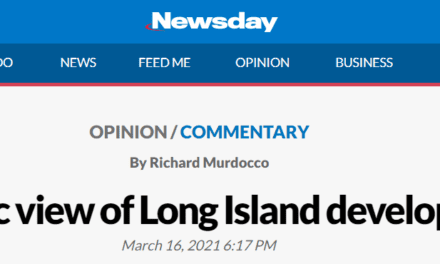Recently, the New York Times wrote a piece on the construction of the new Tappan Zee Bridge, which, as the Times says, is the “first new colossal steel bridge in the New York area since the Verrazano.” The fact that New York State was finally able to start construction on the project, is a sign that maybe, just maybe, the notion of large scale public works in New York isn’t dead.
Living on Long Island, with our developer vs. NIMBY battles that make the papers every day, we often forget that our region was once home to some of the most ambitious public works projects in the world. From the Brooklyn Bridge to the Verrazano, New York City and its environs saw the placement of large-scale public works that set the tone for metropolitan areas nationwide. The new Tappan Zee, slated for completion in 2017, should serve as a sign that government is still able to accomplish large tasks (albeit very slowly these days), that benefit the greater good.
The current Tappan Zee opened on December 15, 1955. To be blunt, it’s currently a mess. In 2006, the New York Times wrote the following about the 3.1-mile span:
Started on the cheap during the Korean War, the Tappan Zee was deliberately built to last just 50 years. It passed that milestone last month, just days after transportation planners began gathering public advice about how to fix or replace it.
Like a container of cheap yogurt, the Tappan Zee had a sell-by date from day one.
Since that article was written, 8 years has passed, and by the time the replacement bridge is completed, it will have been over a decade over the bridge’s expected lifespan. Each year, more and more cars pass over the span than what was expected initially, further straining the piece of crumbling infrastructure. Ideally, the planning process for a new bridge would’ve begun when in 1999 then-Governor Pataki started discussing a replacement. New Yorkers clearly aren’t used to public works projects with an expiration date. The Brooklyn Bridge is 131 years old, while parts of the Northern State Parkway are over 87 years old. For perspective, the Verrazano Bridge is so overly-engineered that it can hold twelve times its maximum capacity. In New York, public works projects are built to last. The construction of the current Tappan Zee cut corners, and for decades nervous commuters dealt with the results of poor planning.
The lesson from the whole saga of the Tappan Zee is that when it comes to public works, you cannot cut corners. Long Islanders should take note of this lesson. As we try to plug the brain drain, increase transit usage and tackle the countless other problems of suburbia, we need to remember that some issues are bigger than one mixed-use development here and one bus lane there can fix.
Like the Tappan Zee, our regional infrastructure is outdated and overused. Perhaps it’s time that we take a hard look at our roads, rails and development policies so that we can start anticipating future trends, instead of always trying to play catch up. Density is only as good as the infrastructure in place to support it.











